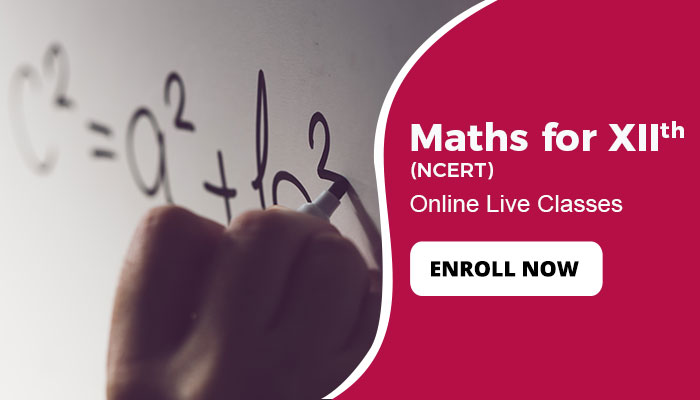SYLLABUS
1. Relations and Functions
1.1 Introduction
1.2 Types of Relations
1.3 Types of Functions
1.4 Composition of Functions and Invertible Function
1.5 Binary Operations
2. Inverse Trigonometric Functions
2.1 Introduction
2.2 Basic Concepts
2.3 Properties of Inverse Trigonometric Functions
3. Matrices
3.1 Introduction
3.2 Matrix
3.3 Types of Matrices
3.4 Operations on Matrices
3.5 Transpose of a Matrix
3.6 Symmetric and Skew Symmetric Matrices
3.7 Elementary Operation (Transformation) of a Matrix
3.8 Invertible Matrices
4. Determinants
4.1 Introduction
4.2 Determinant
4.3 Properties of Determinants
4.4 Area of a Triangle
4.5 Minors and Cofactors
4.6 Adjoint and Inverse of a Matrix
4.7 Applications of Determinants and Matrices
5. Continuity and Differentiability
5.1 Introduction
5.2 Continuity
5.3 Differentiability
5.4 Exponential and Logarithmic Functions
5.5 Logarithmic Differentiation
5.6 Derivatives of Functions in Parametric Forms
5.7 Second Order Derivative
5.8 Mean Value Theorem
6. Application of Derivatives
6.1 Introduction
6.2 Rate of Change of Quantities
6.3 Increasing and Decreasing Functions
6.4 Tangents and Normals
6.5 Approximations
6.6 Maxima and Minima
7. Integrals
7.1 Introduction
7.2 Integration as an Inverse Process of Differentiation
7.3 Methods of Integration 300
7.4 Integrals of some Particular Functions
7.5 Integration by Partial Fractions
7.6 Integration by Parts
7.7 Definite Integral
7.8 Fundamental Theorem of Calculus
7.9 Evaluation of Definite Integrals by Substitution
7.10 Some Properties of Definite Integrals
8. Application of Integrals
8.1 Introduction
8.2 Area under Simple Curves
8.3 Area between Two Curves
9. Differential Equations
9.1 Introduction
9.2 Basic Concepts
9.3 General and Particular Solutions of a Differential Equation
9.4 Formation of a Differential Equation whose General Solution is given
9.5 Methods of Solving First order, First Degree Differential Equations
10. Vector Algebra
10.1 Introduction
10.2 Some Basic Concepts
10.3 Types of Vectors
10.4 Addition of Vectors
10.5 Multiplication of a Vector by a Scalar
10.6 Product of Two Vectors
11. Three Dimensional Geometry
11.1 Introduction
11.2 Direction Cosines and Direction Ratios of a Line
11.3 Equation of a Line in Space
11.4 Angle between Two Lines
11.5 Shortest Distance between Two Lines
11.6 Plane
11.7 Coplanarity of Two Lines
11.8 Angle between Two Planes
11.9 Distance of a Point from a Plane
11.10 Angle between a Line and a Plane
12. Linear Programming
12.1 Introduction
12.2 Linear Programming Problem and its Mathematical Formulation
12.3 Different Types of Linear Programming Problems
13. Probability
13.1 Introduction
13.2 Conditional Probability
13.3 Multiplication Theorem on Probability
13.4 Independent Events
13.5 Bayes' Theorem
13.6 Random Variables and its Probability Distributions
13.7 Bernoulli Trials and Binomial Distribution



